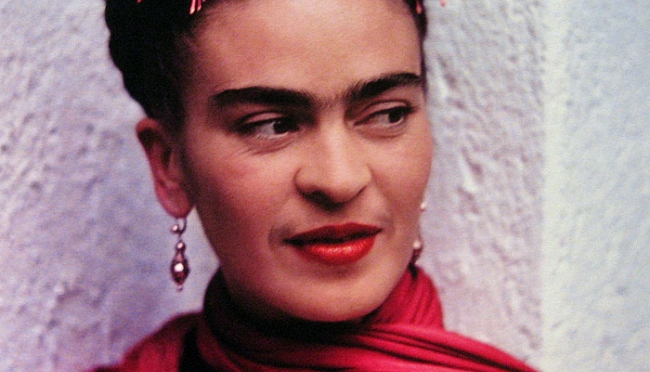Frida Kahlo, The Broken Column (1944), oil on tin, Source: Herrera, Hayden, Frida : A Biography, Harper and Row, New York, 1983.
Abstract: The Self-Portraits of FRIDA KAHLO
The Impulse to Represent the Self: Narcissus
“ Durer mythicises the identity between image and maker …endowing his likeness with the “omnivoyance” of a holy icon, he celebrates himself as a universal subject, whose all-seeing gaze is subject to none.” 4
Strikingly, there are parallels with Kahlo’s own impulse to represent the self in a period of Mexican history that has been termed the Mexican “Renaissance”. The legacy of Durer in Kahlo’s art is manifest in the close analogy between (i) bodies and texts, (ii) the artist’s self-portrait and the holy image (in the case of Durer, the body of Christ); and (iii) the Renaissance painter’s ascent from craftsman to artist, celebrating the artist’s art as the vera icon of personal skill. The Renaissance humanist notion of Man as created in the image of God is envisioned in Durer’s idealised 1500 Self-Portrait, where he is both created in the image of God and through artistic production creates as God. Kahlo’s repeated imaging of her incomplete barren body, a suffering and wounded body, places the woman-child at the centre of the universe, as universal all-seeing subject, yet corrupted and incomplete, as in Durer’s later self-portraits. Kahlo’s self-portrait works such as The Broken Column (1944); The Wounded Deer (1946); and The Two Frida’s (1939), recall the representation of the body in pain in Durer’s Self-Portrait as Man of Sorrows and Self-Portrait of the Sick Durer (a. 1512). In these works there is no illusory sense of self mastery in depictions of the wounded and incomplete body.
Photographic Portraiture
This highlights the legacy of the recent photographic medium upon modern painting, a medium with a tradition spanning centuries. As Roland Barthes writing on photography articulates… ” Painting can feign reality without having seen it. Discourse has signs which have referents… Contrary to these imitations, in Photography I can never deny that a thing has been there. 7
The self-portraits represent Kahlo’s reality, like the folk retablos in which the village artisan pins objects from the accident to the votive offering (a victims hair, samples of a vehicles wreckage), she symbolically rather than physically incorporates traces of imaginary and material objects. In all the roughly fifty five self-portraits produced the lens is turned back upon the viewer who is forced to apprehend the dominating subjective gaze of the model Kahlo, thus the surveyor becomes surveyed.

Figure 2. Frida’s drawing of her accident in Herrera, Hayden, Frida: A Biography of Frida Kahlo, Harper and Row, New York, 1983, plate 10
Central to the Frida Kahlo narrative of self is a tragic bus accident, the injuries incurred of which she never physically or emotionally recovered. Indeed the physical injuries sustained in the accident when she was eighteen
The images of suffering, wounds, loss, grief, and barrenness appearing in much of her work could be derived from this fateful accident, an event scarring her body for life. The tears that she claims she never shed on that day seem to be endlessly reproduced in her pictures. The pain that she suffered throughout her short lifespan necessitated the long term and perpetual use of pain-killers and morphine. Indeed, all medical evidence pointed towards this substance as the cause of Kahlo’s suicide 13 July 1954. 10
1 Kahlo, Frida,The Diary of Frida Kahlo, Bloomsbury, London, 1995, p134.
2 Woodall, Joanna (Ed), Portraiture: Facing the Subject, Manchester University Press, New York, 1997, p1. (via the translation of Arabic texts into Latin)
3 Woodall, Joanna (Ed),op cit p1.
4 Koerner, Joseph Leo, The Moment of Self-Portraiture in German Renaissance Art, The University of ChicagoPress, London and Chicago, 1993, p242.
5 Herrera, Hayden, Frida: A Biography of Frida Kahlo, Harper and Row, New York, 1983, p5.
6 Herrera, Hayden, op cit p8.
7 Barthes, Roland, Camera Lucida, Flamingo, Great Britain, 1980, p76. [my italics]8 Herrera, Hayden, op cit3, p48.
8 Herrera, Hayden,op cit p48.
9 Herrera, Hayden,op cit p49.
10 Kahlo, Frida, The Diary of Frida Kahlo, Bloomsbury, London, 1995, p134.


